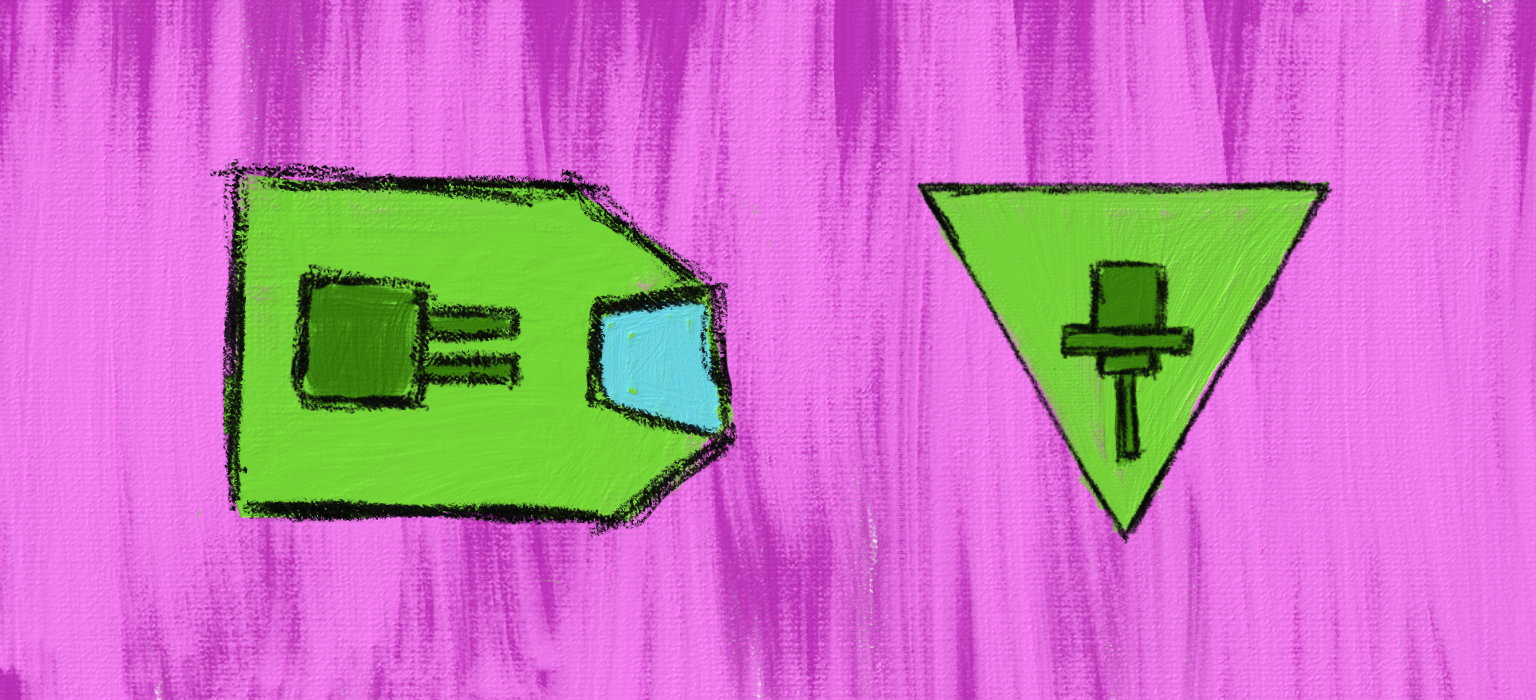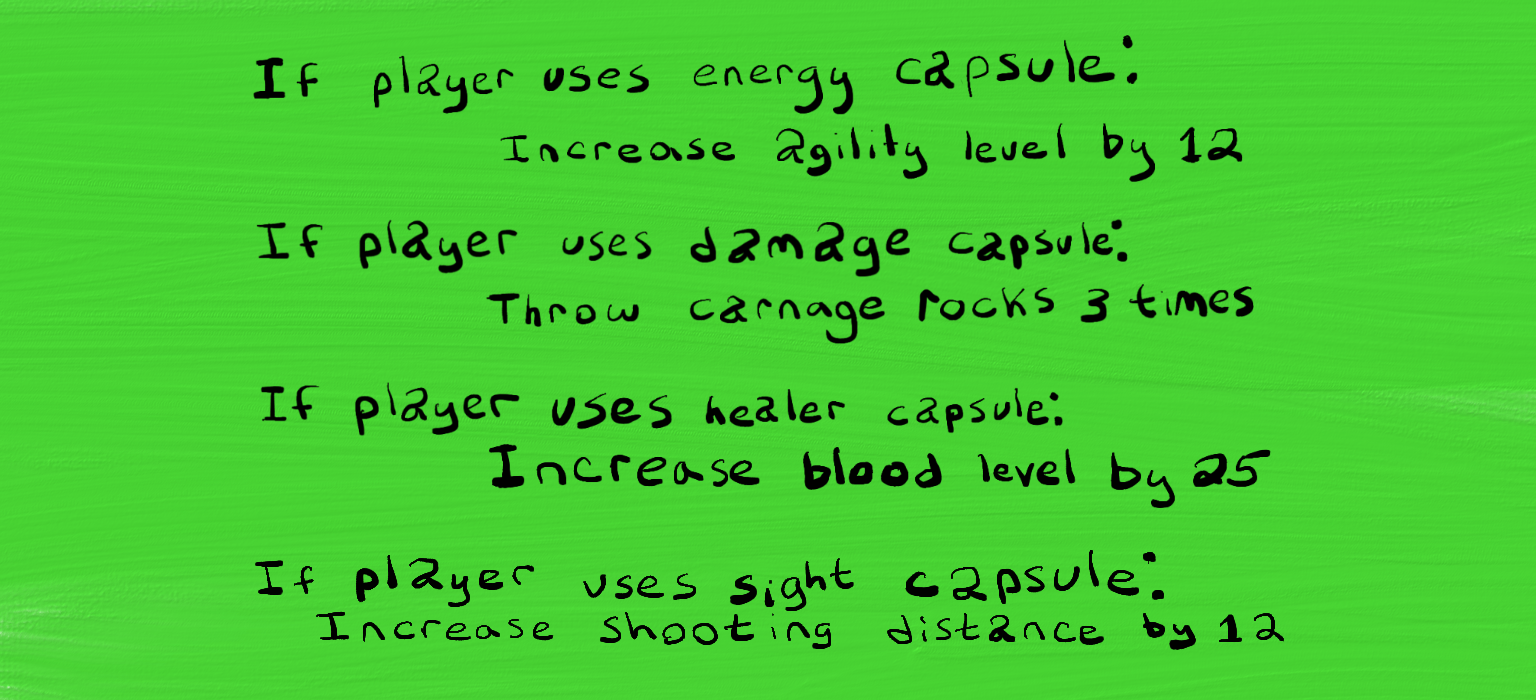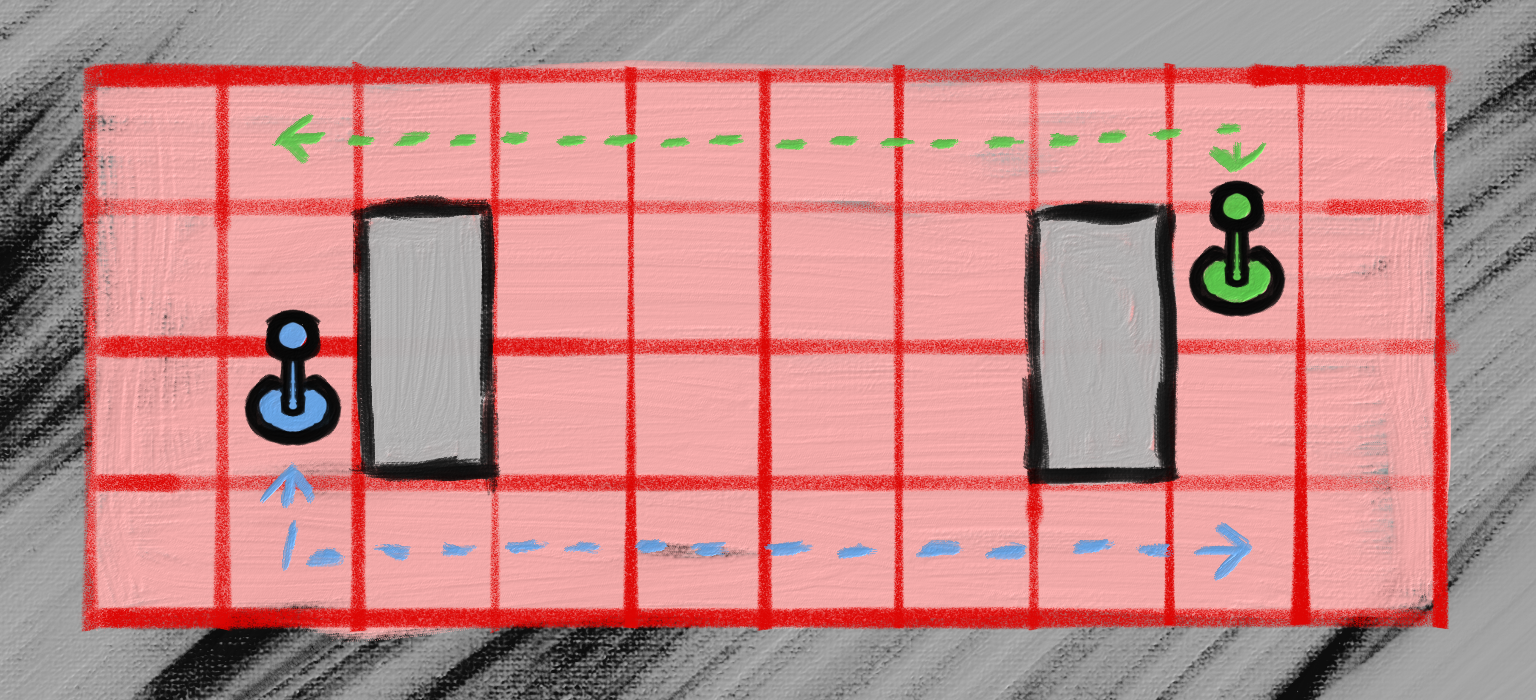Challenges
Origin X
The following obstacles in this board game were addressed from a programmer’s perspective.
Heat Maps
Challenge
When the board game map was not randomly generated, there was a desire to know where players were dying in order to identify pain points in the deathmatch experience. The next hurdle was finding a method to track this data.Action
Digital games often use heat maps to understand where players are dying in a level, so this idea was adapted for a physical format. An image of the map was drawn and printed, then brought to the playtest sessions. Each time a player died, the position was recorded on the sheet.Result
The image above shows one of the heat maps. The brown areas indicate higher elevation, yellow represents lower elevation, and grey marks inclines connecting the two. Red shaded portions show the positions where players died. Data analysis revealed that many deaths occurred in the lower elevation. Further testing showed that these areas were at a disadvantage because they were openly exposed. The solution was to add small areas of cover to give players better opportunities to protect themselves.Inheritance
Challenge
The image above shows crude representations of a vehicle on the left and a turret on the right, viewed from a top-down perspective. These elements did not make it into the finished prototype due to time constraints. While they were in development, the idea of having several types of each was considered.Action
To support multiple types of vehicles and turrets, continuity between their variations was necessary. Each variant needed to share certain characteristics, similar to how inheritance works in a parent and child class structure. Design rules were created to maintain this relationship, such as all vehicles having impact damage and movement, and all mounted turrets increasing damage but suspending movement.Result
Applying programming concepts provided a framework for creating multiple turret and vehicle systems. However, the scope was too large, so these features were cut from the final prototype. They could be revisited in the future, possibly as an expansion.Many Iterations
Challenge
Determining what was genuinely fun in a board game proved to sometimes be difficult, especially when experiencing creative block. This is mainly because ideas that seemed exciting in theory often felt underwhelming when implemented. A method was required to identify what created an enjoyable gameplay experience.Action
Producing numerous basic prototypes provided the answer. Expensive materials were avoided until the structure of the game was clearly defined and refined. The basic materials shown in the image above were sufficient to test whether a concept had genuine entertainment value. The repeated process involved breaking down promising ideas into individual mechanics and converting them into playable systems for others to try. This cycle continued until the desired audience reaction was consistently achieved.Result
Comparing the earliest prototype to the final version showed a clear progression in refining the vision through playtest feedback. The core elements that made the game enjoyable became more apparent. In this case, much of the amusement came from appealing to those interested in experiencing a first person shooter as a board game.Pseudocode
Challenge
The tabletop project grew to include numerous mechanics and systems. This introduced many potential edge cases that could disrupt gameplay. Since playtest sessions were valuable, identifying these issues beforehand became essential.Action
A method using pseudocode was developed. Each gameplay component was outlined as a snippet of logic, similar to the examples in the image above. These ones in particular describe what happened to a character upon using each special ability. These were all written on separate index cards. Once the entire game was fully broken down into these elements, they could be paired to identify situations that had not been thoroughly tested.Result
The process was time consuming but effective in uncovering overlooked scenarios. One example involved pairingIf player uses sight capsule: Increase shooting distance by 22 with If player uses sharp sight: Increase shooting distance by 12. The sight capsule was intended to enhance close-range weapons, but its effect on a long-range weapon, such as a sniper rifle, proved excessive. This led to the sight capsule’s value being reduced by half.




